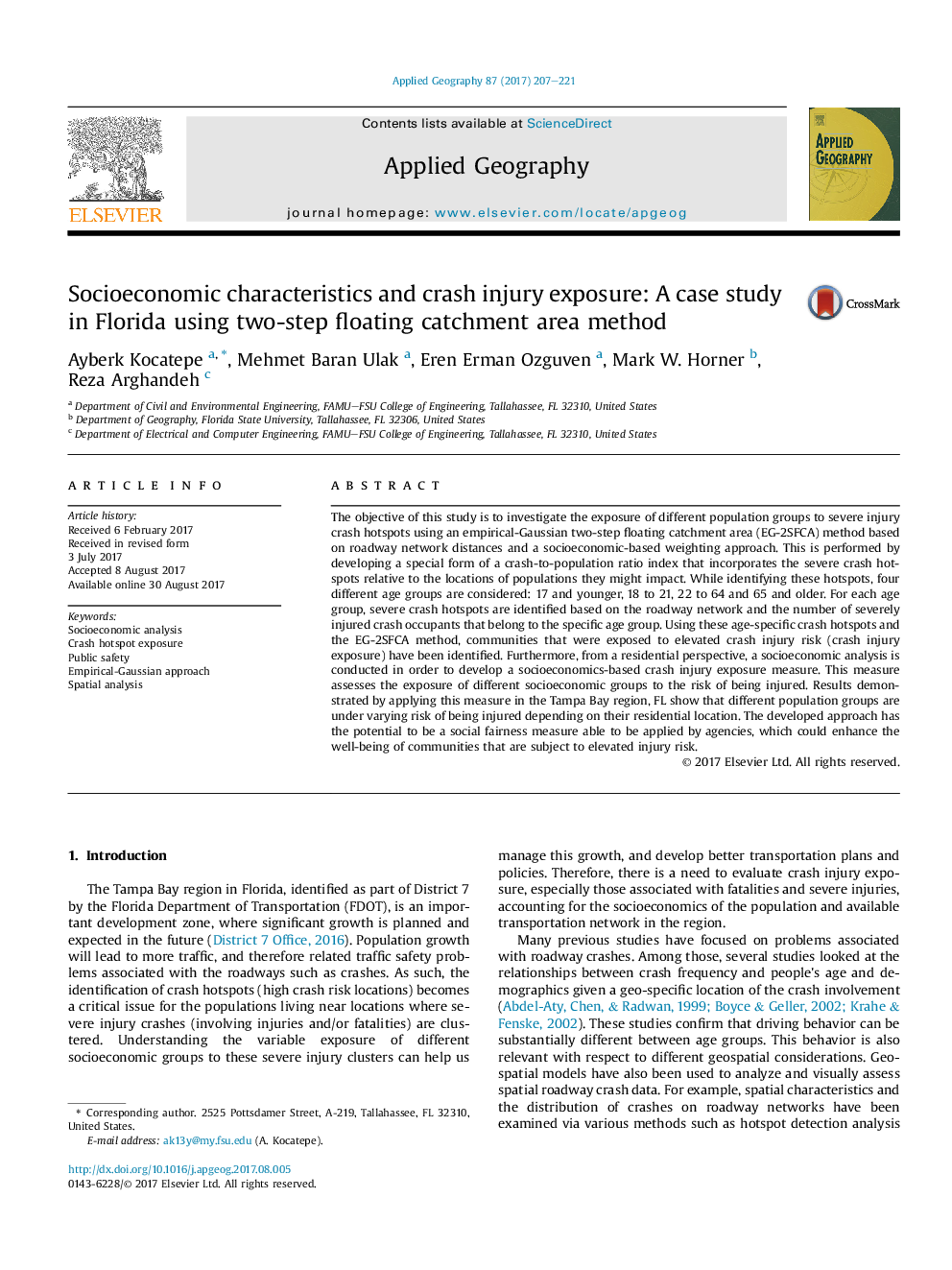| Article ID | Journal | Published Year | Pages | File Type |
|---|---|---|---|---|
| 6458395 | Applied Geography | 2017 | 15 Pages |
â¢The exposure of different socioeconomic groups to crash injury risk was measured.â¢An empirical-Gaussian continuous distance decay function was used in 2SFCA method.â¢A roadway network distance- and socioeconomic-based weighting approach was adopted.â¢Communities that were exposed to elevated crash injury risk have been identified.â¢The developed approach can be utilized as a social fairness measure by agencies.
The objective of this study is to investigate the exposure of different population groups to severe injury crash hotspots using an empirical-Gaussian two-step floating catchment area (EG-2SFCA) method based on roadway network distances and a socioeconomic-based weighting approach. This is performed by developing a special form of a crash-to-population ratio index that incorporates the severe crash hotspots relative to the locations of populations they might impact. While identifying these hotspots, four different age groups are considered: 17 and younger, 18 to 21, 22 to 64 and 65 and older. For each age group, severe crash hotspots are identified based on the roadway network and the number of severely injured crash occupants that belong to the specific age group. Using these age-specific crash hotspots and the EG-2SFCA method, communities that were exposed to elevated crash injury risk (crash injury exposure) have been identified. Furthermore, from a residential perspective, a socioeconomic analysis is conducted in order to develop a socioeconomics-based crash injury exposure measure. This measure assesses the exposure of different socioeconomic groups to the risk of being injured. Results demonstrated by applying this measure in the Tampa Bay region, FL show that different population groups are under varying risk of being injured depending on their residential location. The developed approach has the potential to be a social fairness measure able to be applied by agencies, which could enhance the well-being of communities that are subject to elevated injury risk.
